Game Informer |
- God Of War: Ragnarok's Director Speaks With Us About This Game's Version Of Thor
- Far Cry 6 Is Crossing Over With Stranger Things And Rambo, And Gives You Control Of Past Far Cry Villains
- The Making Of Life Is Strange: True Colors
- How God of War Ragnarok's New Director Brings A Different Perspective To The Series
| God Of War: Ragnarok's Director Speaks With Us About This Game's Version Of Thor Posted: 11 Sep 2021 11:00 AM PDT Ragnarok is coming in the new God of War. Kratos and his son Atreus may be gearing up to battle some of the remaining members in the Norse pantheon, and we know one for sure that's going to show up. In a stinger tease at the end of the previous game, Thor, the legendary god of thunder, arrived at our protagonists' front door unannounced. We all know the headstrong and musclebound Thor from the MCU or other depictions, but Sony Santa Monica is taking a different approach for the popular mythological figure. Our own Alex Stadnik spoke with God of War: Ragnarok's director Eric Williams and creative director Cory Barlog about how the Asgardian is portrayed in the new game and why the team settled on his rounded physique. "Well, I don't know, we just want him to be a big boy, you know. There's Marvel's interpretation of him is one thing. It's interesting. We wanted to, you know, go a little deeper into the mythology itself," Williams says about Thor having a burlier body type. Being godly is all about presence, and while this version of Thor doesn't look like a sculpted underwear model, his traits of power and intensity are no less effective. Williams also talks about people he knows in real life with a bigger stature and how that translates into Thor: "They have a presence immediately. And it's not always because of muscles. They're just like that is a wall of a human being, you know. So this is a wall of a God, you know, and that's why it was very important." 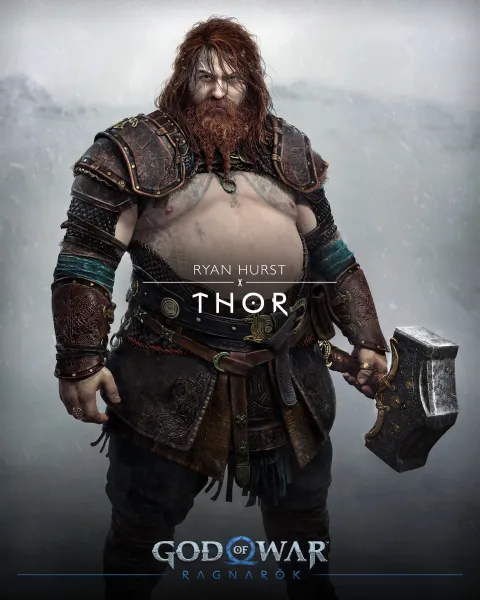 "I think there's something so fantastic in that that not everything needs to be this glistening muscle hulk kind of concept to still be fantastic and powerful and intimidating," Cory Barlog chimed in. However, according to Williams, this take on Thor will be a bit immature because he wields all that power. "I wanted him to almost feel like a man child, you know, like if you had that much power and you can do those things, you're not going to grow. You don't need to. You just do what you want," Williams describes as being the core vision of this Thor. In our full interview, Williams talks about what Thor is like as a character in this world and his relationship with his sons in the previous God of War. It's refreshing to see a character that typically looks like a Chris Hemsworth type not being the Hollywood ideal body shape. Big bodies are real and everywhere. They should be celebrated as well as included in all forms of media. We can't wait to see more of this "big boy" Thor in action and how he's woven into the story of God of War: Ragnarok, even if we have to rough him up along the way. Our full interview with Eric Williams and Sony Santa Monica Creative Director Cory Barlog will be available in the coming days. Be sure to check it out when it drops on this very website next week, but in the meantime, take a look at how Eric Williams is bringing a fresh perspective to this arc in the franchise here!
|
| Posted: 11 Sep 2021 10:51 AM PDT 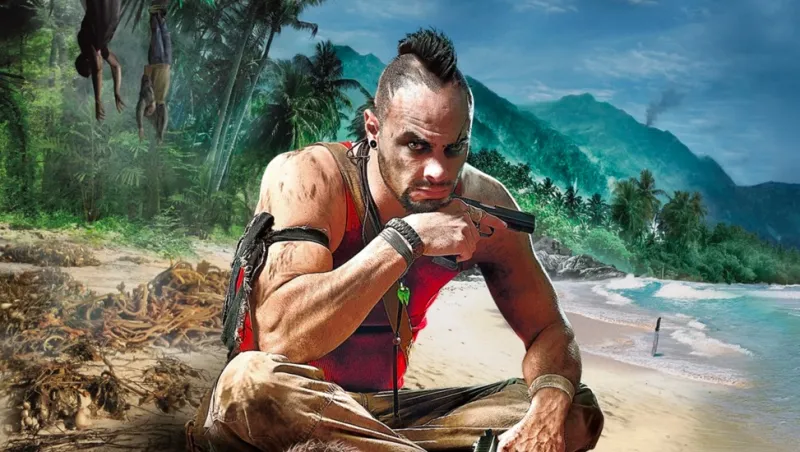 Click here to watch embedded media Click here to watch embedded media Far Cry 6's DLC invites you into the minds of madmen, reminds us why Rambo is awesome, and veers into unexpected territory with a Stranger Things crossover. Ubisoft shared new details for this exciting post-launch content and also gives us a nice look at what we can expect (which you can see in the trailer above). After Far Cry 6 launches on October 7, and players hopefully make it through the campaign, Ubisoft is releasing three DLC episodes, each giving you control of a different villain from Far Cry's past. The first episode, titled "Vaas: insanity" brings you into the mind of Far Cry 3's antagonist Vaas Montenegro. Episode two is called "Pagan: Control" and dives into the life of Far Cry 4's Pagan Min. The final episode, "Joseph: Collapse," focuses on Far Cry 5' Joseph Seed. All of these returning villains are voiced by the same actors from the core games. In a press release, Ubisoft says each of these characters is "struggling to escape the horrors of their own minds." These episodes are apparently designed like roguelites with what Ubisoft calls a "die and retry" experience. You always start with a pistol and are forced to find new weapons and powers to make it further into the story. These episodes are in the Season pass that is bundled with Far Cry 6's Gold, Ultimate, and Collector Editions. Episode 1 launches in November, episode two hits in January 2022, and episode three is two months later in March. The season pass can be purchased separately for $39.99. If you don't want to pay for more content, three free crossover missions are on the way. One of these missions sees actor Danny Trejo teaming up with Far Cry 6's protagonist Dani Rojas. Next up is a Rambo event that is supposedly designed like a 1980s action film. The final crossover event brings the player to Stranger Things' Upside-Down for a rescue operation. On top of these cool side stories, Ubisoft is launching free weekly insurgencies that push the player to eliminate new threats on the island of Yara. Once these missions are completed, new gear updates are offered up. Six new special operations will also be released post launch, taking the player to unique areas of the world where unstable chemicals are stored. Are you excited for Far Cry 6? And what do you think of Ubisoft's approach to the DLC? Let us know in the comments section below!
|
| The Making Of Life Is Strange: True Colors Posted: 11 Sep 2021 09:00 AM PDT Life is Strange made a name for itself by focusing on relatable characters dealing with complex, real-life issues. The series has tackled mental health, identity, and even racism in its stories. Along the way, relationships between characters, such as Chloe and Max's friendship and Sean and Daniel's sibling bond, have driven each narrative in memorable ways. The games have always centered on our choices and how they shape the people and world around us. As the series goes into its third iteration, it leans into its strength of authentically portraying life's hardships and complicated emotions. The latest entry, Life is Strange: True Colors, is a new starting point, starring a new character with a different power: Empathy. It's also the first mainline entry not being developed by original development studio Dontnod; instead, it is being created by Deck Nine, the team responsible for the outstanding Before the Storm prequel. Here's a behind-the-scenes look at how Alex Chen's journey came to life and why empathy was always a driving force in its creation. 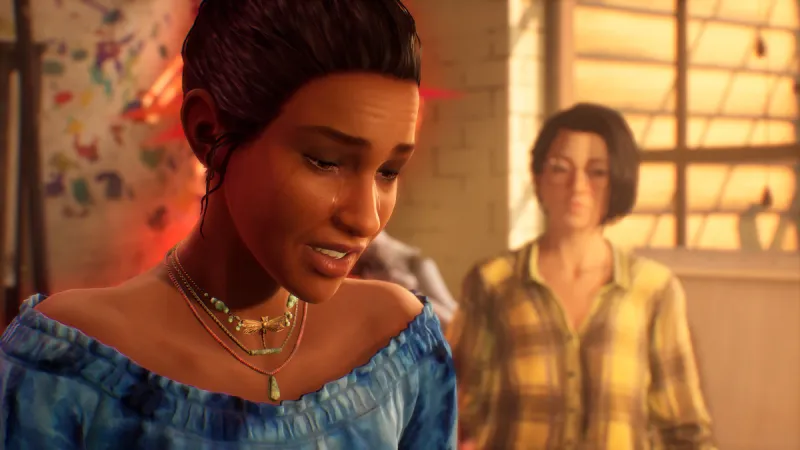 Your decisions will shape the community of Haven Springs and the relationships Alex forms there Your decisions will shape the community of Haven Springs and the relationships Alex forms there How Before The Storm Informed True ColorsDeck Nine is intimately familiar with the Life is Strange world and what makes it unique. The team loved bringing to life Chloe and Rachel's sweet-but-somber story in Life is Strange: Before the Storm and surprised fans and critics alike in how they gave the character of Chloe more layers and allowed players to understand her plight better. One thing that stood out in the team's mind was the power of empathy in telling Chloe's story. It stayed with Deck Nine until Square Enix approached the studio to develop the franchise's third main entry. "It was very much a period of discovery, where there was no rush to find the right thing," says narrative director Jon Zimmerman. "We had the time and the freedom to explore all different ideas. And it was actually pretty soon that we came to this notion of empathy; that was the germ that led to everything else …" "I know that we wanted to embrace the fact that a narrative adventure game is a literal experience of empathy," adds senior staff writer Felice Kuan. "We loved that aspect of it, and that was there from the start." Both Zimmerman and Kuan were new to writing for video games when they worked on Before the Storm. It let them come in with a fresh perspective, and they quickly realized video games had a big advantage when telling stories. "We would talk a lot about big picture things around narrative adventures, and we often came back to this thing of how absolutely unique and spectacular it is to place a player in the perspective of a character that you want to create a dramatic journey for, and how that differentiates games from every other medium," Zimmerman says. Deck Nine quickly became immersed in the fan community for Before the Storm. One of the team's favorite pieces of feedback was that players who previously didn't love Chloe changed their tune after playing as her in Before the Storm. "A common thread was that someone would say, 'Hey, I found Chloe a little bit much in the first game, but then after I was in her shoes, I would die for her,'" Kuan says. This revelation helped solidify that something special happens when players embody a character and experience their point of view. From here, Deck Nine started focusing on creating True Colors' protagonist: Alex Chen, the first Asian American lead in the series. A big goal was to maintain the complexity of the characters we've seen throughout the series and provide somebody completely different from before. 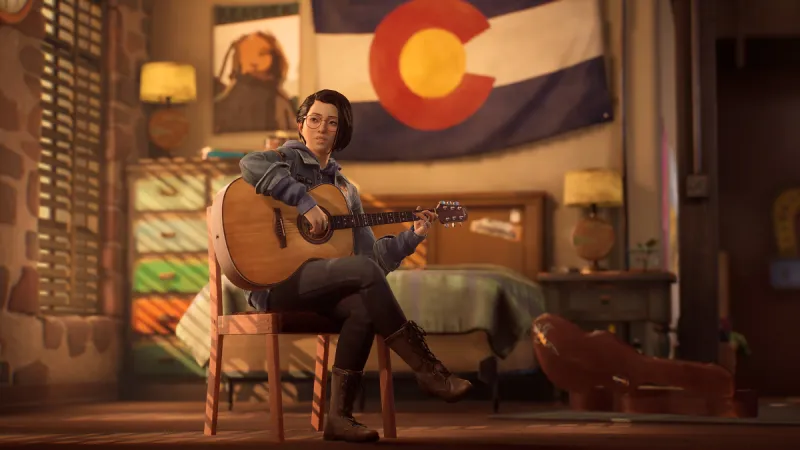 Bringing Alex To LifeTrue Colors is a story with many layers, and Alex's journey cannot be summed up in one sentence. We meet Alex when she's just leaving a group home after eight years. She's heading to live with her brother in a town called Haven Springs [see sidebar]. She gets along with her brother, but they haven't connected in some time. "Her background is intentionally a source of mystery," Zimmerman says. "She comes from a broken family, and she was separated from her brother at a young age. She doesn't have anyone in the world looking out for her by the time she comes to Haven Springs. We'll see in her reuniting with her brother how that brings up the specter of their past and how Alex shies away from wanting to engage with it." Instead of her introduction to Haven Springs being a joyful one, tragedy soon strikes when Alex's brother dies in a mysterious accident. Alex is not only on a quest to find out what truly happened, but she's also searching for her own place in the world, a community of her own. "[We knew] that Alex was going to be someone for whom that was singularly meaningful to her, because of her background in foster care and never having a real home," Zimmerman says. 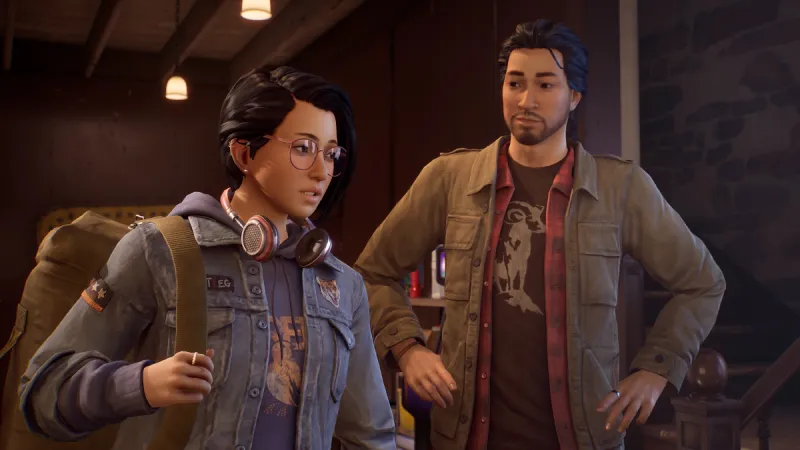 Erika Mori had to mocap some of Alex's most emotional scenes from her apartment due to COVID-19 Erika Mori had to mocap some of Alex's most emotional scenes from her apartment due to COVID-19 Alex is 21 years old, making her more mature than previous Life is Strange protagonists and giving her more adult situations to confront. She's at an interesting point in her life, where she's trying to figure out who she wants to be and what she wants to do. Her life in the group home may not have been great, but it was comfortable. Alex is now leaving all of that, but she sees the limitless possibilities in everything. Erika Mori, who not only lent her voice to Alex but also performed motion capture for the role, describes Alex's personality and outlook best: "Alex has an almost insatiable curiosity to discover what makes people tick, understanding the 'why' behind words or behavior. However, she has lived with the power [or the curse of the power] of empathy her entire life, and its volatility has made life difficult – making her watchful, cautious, and an outsider by circumstance. But she always carries with her this thread of hope that makes her a character of resilience and (ultimately) joy." Alex is in touch with her emotions since her power is empathy. This led to the decision to make her an artist – a musician, to be specific. "At a certain point, we realized that we were talking about an artist, because [we needed] someone who has that kind of a filter on the world – a sensitivity and vulnerability that they can't turn off," Zimmerman says. Understanding and sharing another person's feelings is a skill that seems in short supply these days, but Alex has always seen it as more of a curse than a blessing due to its emotional toll. However, if she wants to find answers about her brother's death, she needs to tap into this ability to see what people are hiding. Discovering how to represent her power wasn't easy, but it proved an essential part of who Alex is and who she becomes.  Making Empathy MatterUntil this point, Life is Strange characters have possessed supernatural powers, like Max's ability to rewind time and Daniel's telekinesis. Alex's power is based much more in reality, as she can feel the emotions of others, but it comes with a twist as she can also manipulate and absorb these emotions. While Deck Nine was initially intrigued by the concept of empathy, it didn't prove easy to discover the best way to portray this ability and make it still feel authentic. As opposed to other Life is Strange protagonists, the writers wanted Alex to have access to her power at the start of the game; she's been living with this ability, and she's already formed her own relationship with it. "What was very compelling to us was [her] power starting in foster care, in the brokenness of her family, you could very well imagine that would make an already bad situation worse," Kuan says. "Therefore, that gives Alex a lot of complexity within herself, an ambivalence about this power … Because we didn't want to look at empathy just as a gameplay mechanic but as a thing that can be both a wonderful tool and a source of harm or a source of self-doubt. Having her in that spot, both supernaturally and just from the mundane emotional level, was very interesting to us." Zimmerman recalls it taking time to figure out how to best represent Alex's power in the gameplay but says finding the solution is one of his highlights working on the game. Alex's power of empathy started very simply, with the team using different colored auras to represent specific emotions in others. However, things got exciting when the developers came up with the idea to add "novas." Novas create a supernatural flare that transforms the world before you, offering a reflection of another person's psyche. In this highly charged emotional state, Alex sees fragments of thoughts and memories to help her get to the root of the issue. "I think [novas are] when everything really clicked into place from a story and design marriage standpoint, because we had the freedom to get kind of surreal and abstract in evoking, 'What does fear feel like?'" Zimmerman explains. The team went beyond just thinking about the emotion itself into how the feeling would be represented in a specific character. Zimmerman uses the example of fear looking very different for a child than it does for an older person, saying the novas allowed the team to dive into all the various nuances of empathy. 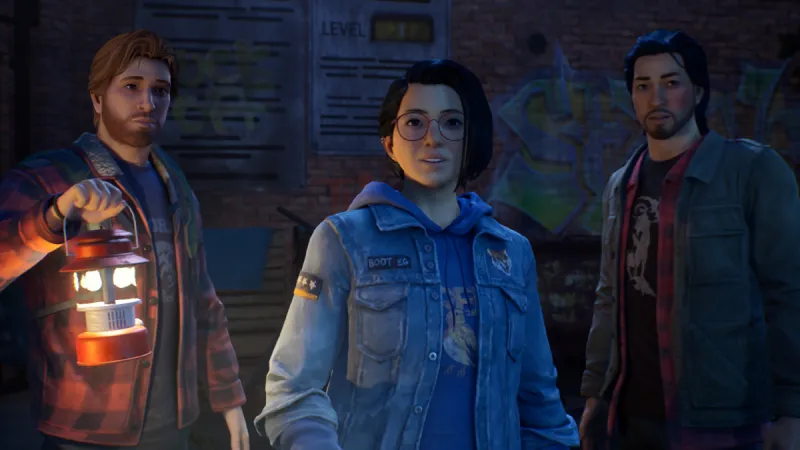 All episodes of True Colors will be available at launch, but the game still keeps the five-chapter format and intense cliffhangers All episodes of True Colors will be available at launch, but the game still keeps the five-chapter format and intense cliffhangers When it came to Alex's power, Mori had to think carefully and experiment for her performance. "It was a really interesting puzzle to figure out how to perform a specific emotion that was going through several different filters before arriving in the world," she explains. "For example, when another person's rage would overtake Alex, she would intimately know how that rage was feeling for them, but it would also trigger her own feelings and [memories] of her own rage. Ultimately, Alex was trying to contain the emotional resonance of two people – the other and herself. It was fun to play with the different ways to show this with my face, body, and voice." Of course, understanding characters on a deeper level is bound to impact a choice-heavy game. That's not lost on Deck Nine, as the creative team constantly asked itself what kinds of dilemmas and challenges would occur through the empathic experience. "An obvious one is if you can empathize with a person who is doing something immoral, does that change the way that you feel about the action that they're taking?" Zimmerman says. "I think that there's a whole family of questions, not that those are the only things that come up as choices, but things that we felt were exciting territory to explore."  It's an interesting choice to put in the player's hands, as they can decide whether to have Alex experience, absorb, or even manipulate the powerful emotions in those around her. For instance, do you let someone feel the painful emotions, or do you take these feelings away from them? And what toll does that take on Alex? "What the game ultimately says is that it is a balance of understanding where your personal boundaries are," says producer Rebeccah Bassell. "The player can decide that for Alex, and at the same time, [decide if they should] honor the feelings of those around her, because it is a very precious thing to take away someone's agency. You may think it will help them, but it may not. And that's the choice that they have to navigate." Navigating emotions is already complicated, but Deck Nine takes it to a new and intriguing level by making players consider the different facets of empathy and its positive and negative parts. Since empathy is the driving force behind the game, it makes sense to challenge the player with its complexities. For more on Life is Strange: True Colors, you can read our review. This article originally appeared in Issue 339 of Game Informer.
|
| How God of War Ragnarok's New Director Brings A Different Perspective To The Series Posted: 11 Sep 2021 07:17 AM PDT If you're familiar with the development of 2018's God of War, you'll know how personal of a game it was for Cory Barlog. The game's director has long talked about the importance of crafting Kratos' return to the PlayStation scene as a father-son story that pushed the violent Greek god into a more caring figure. The gamble worked, and Sony Santa Monica was able to craft a thoughtful and epic tale that took the best of the original series and brought it to a new audience. But now times are charging, and Barlog is stepping away to let series veteran Eric Williams run Kratos' next adventure. During our chat with Williams, the newly announced game director talked to us about how he's struggled with the father-son story and what he plans on bringing to the table for Ragnarok. "Unfortunately, it didn't work out for my wife and me," Williams said. "So I struggled with that a lot. Like, how do I take this on? You know, and it's like luckily we do have still a lot of like fathers and mothers and parents on the team that I can borrow stories from. So I looked at it from a different way. I was like, okay, well, the last game was a lot of you had one young person and a lot of adults. So there's a lot of asking. There's a lot of telling. And I was like, well, how do we change that? So there's a better perspective for Atreus, who's growing into a young man. And so we wanted to find ways to bring characters that are closer to his age in and so that we can see those different perspectives." The 2018 title found Kratos learning to be a father and dealing with Atreus growing up in a world he can't fully understand. With that, though, Atreus never really had anyone his age to grow up with and learn from. That changes in Ragnarok with the inclusion of Angrboda, the last of the giants. "And I kind of looked at it for me being a kid, you know, dealing with parents and remembering all that. So there's a different way in for everyone. It can be like, oh, if you're a parent, you're going to see it this way. You know, if you can remember back to being a kid, maybe you can see it that way. And if you're young, you're probably going to straddle that line and be like damn it, like I get this from both sides what do I do? And that's where we get that humankind of condition that allows people to connect and work their way into the story." When asked about exactly what Angrboda would be doing in Ragnarok's story, the developer decided to defer to another time. Still, those familiar with Norse mythology know the potential for a romantic relationship with Kratos' growing boy. For more on God of War Ragnarok, be sure to check out the first look at gameplay from the recent PlayStation Showcase!
|
| You are subscribed to email updates from Game Informer. To stop receiving these emails, you may unsubscribe now. | Email delivery powered by Google |
| Google, 1600 Amphitheatre Parkway, Mountain View, CA 94043, United States | |

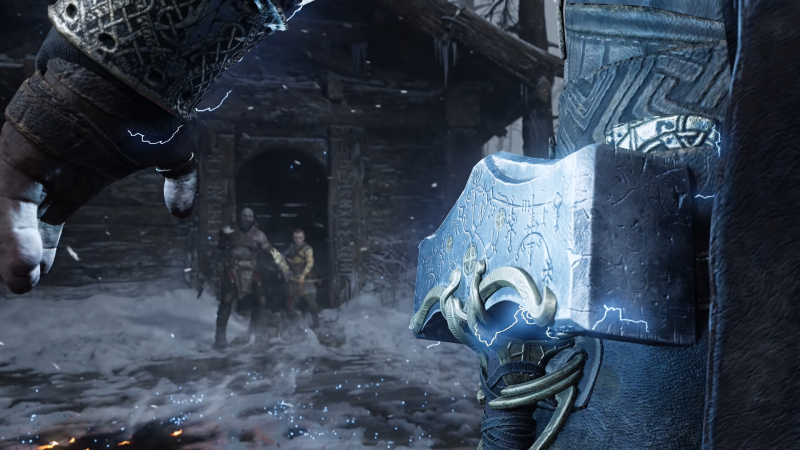
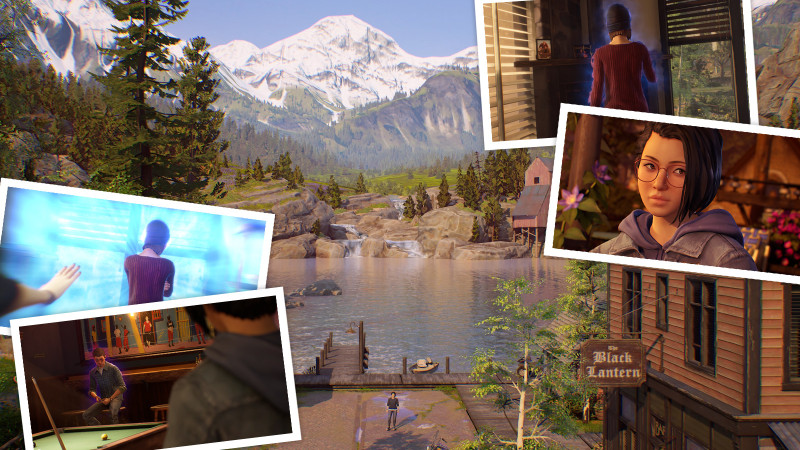
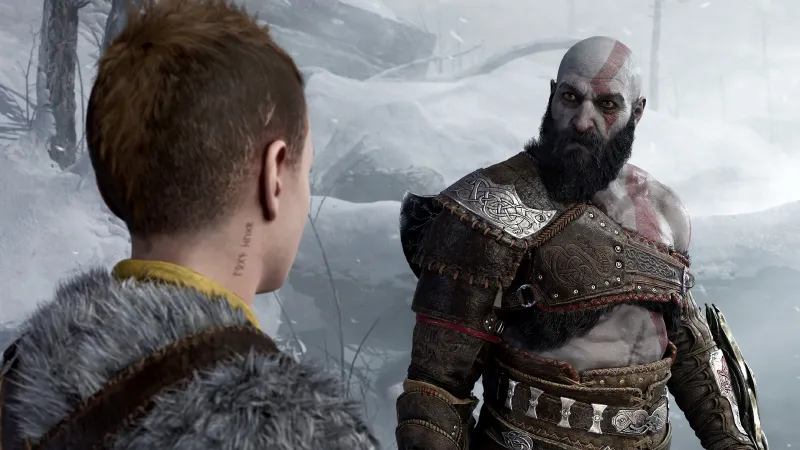
No comments:
Post a Comment